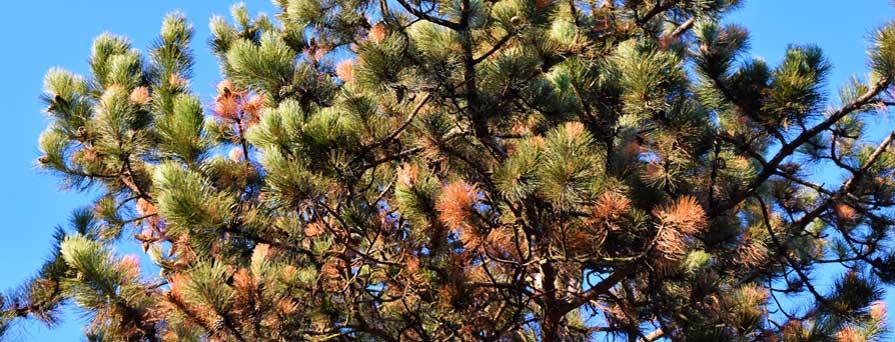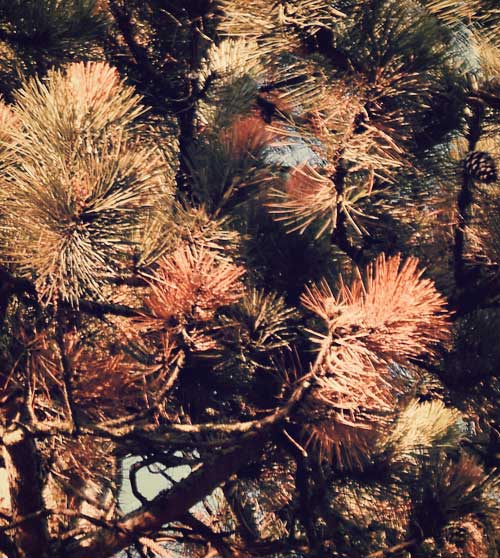We've all seen them - those reddish-colored pine needles that start with a few and then, over time, seem to take over some pine trees.
According to Colorado State Forest Service, thousands of trees are displaying yellow or rust-colored needles due to a natural "shedding" process, and the trees should recover.
Generally, new needles are produced every spring and summer and last for two to four years (they don't stay literally 'ever green'. Older needles aren't as efficient at producing food for the tree and eventually turn brown and drop off. This doesn't hurt the tree because there are newer needles ready to replace the old ones.
It is common to see these unsightly needles on pine trees after a particularly harsh round of extreme temperatures (warm days and then a blast of arctic cold). Trees that are already stressed because of lack of adequate water (drought) or some kind of root damage (sitting in a boggy or standing-water area) may shed more needles to keep the tree in balance with it's root system.
In Colorado, ponderosa and lodgepole pines and also some spruce and fir trees are the trees that seem to be most susceptible to needle shedding.
CSFS wants landowners to know that there is no need to spray or otherwise chemically treat pines and other evergreens exhibiting normal needle drop.
Want more information? Here's an article from Plantalk (Colorado State University Extension) with fact sheets, additional articles, and a YouTube video.

